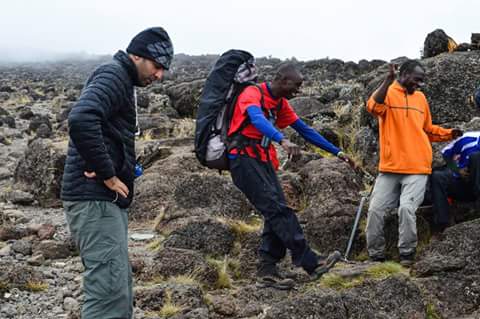Mount Kilimanjaro (Origin of the word Kilimanjaro)- Africa Natural Tours ( africanaturaltours.com )
Mount
Kilimanjaro (Origin of the word Kilimanjaro): Africa Natural Tours
AFRICA
NATURAL TOURS
(The best tour company in Tanzania)
Specialized in: Mountain climbing,
Wildlife safaris, Cultural tourism and Beach holidays
Contact +255
653 679 958 OR +255 623 992 830
The history of the word Kilimanjaro
The
origin of the name "Kilimanjaro" is not precisely known, but a number
of theories exist. European explorers had adopted the name by 1860 and reported
that "Kilimanjaro" was the mountain's Kiswahili name. The 1907 edition of The Nuttall Encyclopædia
also records the name of the mountain as "Kilima-Njaro".
Johann Ludwig Krapf wrote in 1860 that Swahilis along
the coast called the mountain "Kilimanjaro". Although he did not
support his claim, he claimed that "Kilimanjaro" meant either
"mountain of greatness" or "mountain of caravans". Under
the latter meaning, "Kilima" meant "mountain" and
"Jaro" possibly meant "caravans".
Jim
Thompson claimed in 1885, although he also did not support his claim, that the
term Kilima-Njaro "has generally been understood to mean" the
Mountain (Kilima) of Greatness (Njaro). "Though not improbably it may
mean" the "White" mountain.
"Njaro"
is an ancient Kiswahili word for "shining". Similarly, Krapf wrote
that a chief of the Wakamba people, whom he visited in 1849, "had
been to Jagga and had seen the Kima jaJeu, mountain of whiteness, the name
given by the Wakamba to Kilimanjaro...." More correctly in the Kikamba language, this would be Kiima Kyeu, and this possible derivation has
been popular with several investigators.
Others
have assumed that "Kilima" is Kiswahili for "mountain". The
problem with this assumption is that "Kilima" actually means
"hill" and is, therefore, the diminutive of "Mlima", the proper Kiswahili word for
mountain.
A
different approach is to assume that the "Kileman" part of
Kilimanjaro comes from the Kichagga "kileme", which means "which
defeats", or "kilelema", which means "which has become
difficult or impossible".
The "Jaro" part would "then be
derived from njaare, a bird, or, according to other informants, a leopard, or,
possibly from jyaro a caravan." Considering that the name Kilimanjaro has
never been current among the Wachagga people, it is possible that the name was derived from Wachagga
saying that the mountain was unclimbable, "kilemanjaare" or "kilemajyaro"
and porters misinterpreted this as being the name of the mountain.
In
the 1880s, the mountain became a part of German East Africa and was called "Kilima-Ndscharo"
in German following the Kiswahili name components.
On
6 October 1889, Hans Meyer reached the highest summit on the
crater ridge of Kibo. He named it "Kaiser-Wilhelm-Spitze" ("Kaiser Wilhelm peak").
That name apparently was used until
Tanzania was formed in 1964, when the summit was renamed "Uhuru
Peak", meaning "Freedom Peak" in Kiswahili.
For
more information visit www.africanaturaltours.com




Comments
Post a Comment